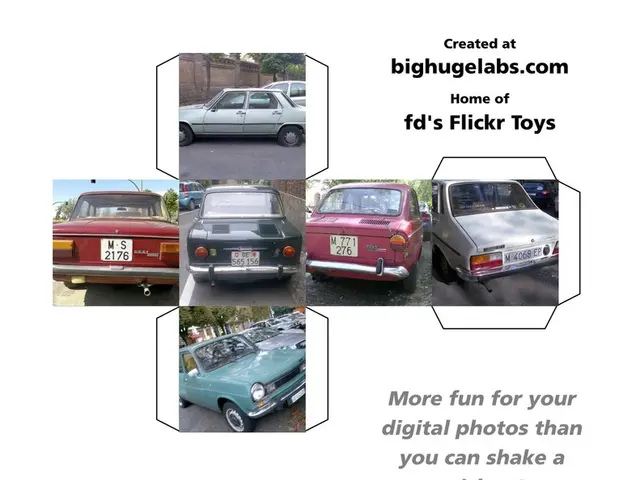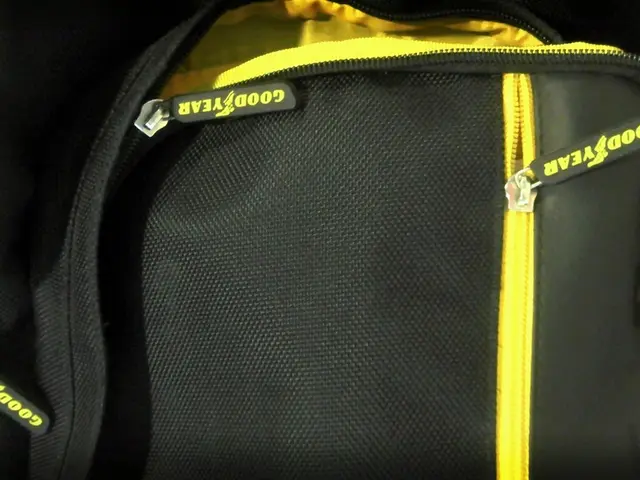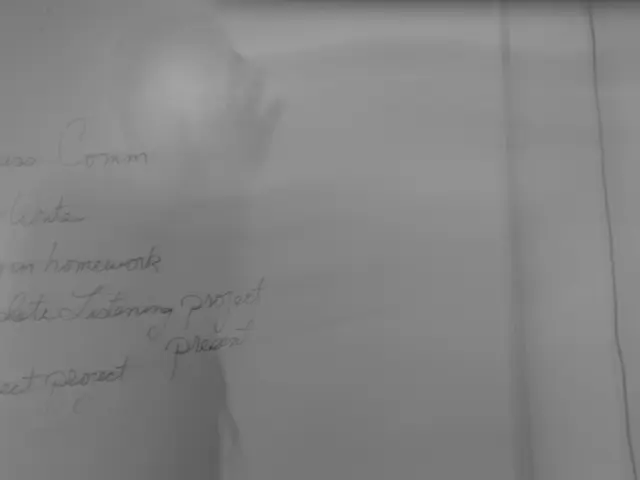Military Exploration of Quantum Technology for Terrestrial GPS Capabilities
Alternative Navigation: The Quantum Leap
The Department of Defense is exploring quantum sensors as a game-changing alternative to satellite-based Global Positioning System (GPS) technology in response to rising threats to GPS signals essential for accurate navigation and timing.
In a potential conflict scenario, Lt. Col. Nicholas Estep from Defense Innovation Unit (DIU) emphasizes the importance of assuming a hostile environment where you can't rely on external positioning, navigation, and timing (PNT) signals such as GPS. That's why DIU, the Pentagon's tech-focused acquisition partner in Silicon Valley, is collaborating with industry partners to create localized alternatives that don't depend on easily jammable GPS signals from satellites far above the Earth's surface.
With GPS critical for military navigation, targeting, and industry purposes, ranging from transportation to finance, signal disruptions caused by conflicts in Ukraine and the Middle East expose the need for reliable alternatives.question marks "What's the strategy for preserving PNT-enabled solutions and ensuring the joint force can execute its mission?" Estep, whose DIU portfolios include quantum sensing, hypersonics, and advanced materials, asks.
Earlier this year, DIU released a solicitation inviting proposals for quantum sensing technology that could serve as a backup for GPS satellites in the short term. According to DIU, the project aims to demonstrate the military utility of quantum sensors to address strategic capabilities required by the joint force. A flurry of proposals poured in, Estep reveals, showcasing a strong industry interest in the technology.
DIU seeks to foster a range of solutions, Estep explains, acknowledging that no single quantum sensor will meet the demands of all branches of the military. Instead, the initiative aims to pair the proposed solutions with appropriate use cases, considering factors such as technology maturity and suitability for aircraft, surface, or subsurface vessels.
In addition to DIU's efforts, the Space Force is developing resilient space-based PNT solutions, such as distributing GPS signals across various satellites in different orbits, to make the system more robust and less prone to disruption. Indeed, resilient PNT was one of the Air Force Secretary's identified priorities under the new "Quick Start" funding authorities.
Quantum Mechanics: Beyond the Basics
Quantum mechanics, dating back to Einstein's pioneering work a century ago, revolves around the unusual properties of subatomic particles, often counterintuitive and difficult to comprehend. Recent advancements in nanotechnology have enabled labs to exploit these quantum properties for the first time, generating renewed interest in the field.
Celia Merzbacher, executive director of the Quantum Economic Development Consortium (QED-C), a stakeholder forum backed by the National Institute for Standards and Technology, affirms that quantum sensing is among the least understood yet most mature of three quantum mechanics areas – the others being quantum computing and quantum communications.
Quantum sensing for PNT relies on the same technology as atomic clocks, providing both precise timing and positioning data based on the actions of subatomic particles. In a September report, QED-C highlighted the potential of quantum sensors for providing navigational information where GPS signals may be unavailable or unreliable.
Lastly, the flourishing of quantum sensing may not be limited to military applications. DOD support for the technology could catalyze a commercial market within five years, Merzbacher predicts, accelerating the transition of quantum sensing PNT solutions from lab to battlefield.
However, challenges remain in integrating these advanced components into practical tools that can withstand extreme conditions such as vibration and radiation, Merzbacher emphasizes. China, similarly, has developed an existing terrestrial alternative to GPS in Enhanced Long-Range Navigation (eLORAN), offering greater precision and resistance to disruption over traditional satellite-based PNT systems.
Beyond the Beacon: A New Era of Navigation
The champions of quantum sensing argue that it represents a fundamental shift, moving away from the GPS-based beacon-signal approach. "We want to enable navigation based on local measurements," Michael Biercuk, CEO of Q-CTRL, a quantum technology company, states, "essentially indicating that now we want to be capable of navigating without relying on signals from GPS satellites."
By measuring minute differences in the Earth's magnetic and gravitational fields, which can be accurately mapped, a tool capable of detecting these variations can determine its position, Biercuk explains. Quantum sensing, in essence, could enable users to find their way using only tools that measure local phenomena, a method affectionately referred to as 'quantum orienteering.'
Stable and scalable quantum sensing technology remains a work in progress, with ongoing challenges related to integrating new components and technologies into practical, field-ready tools. Yet, as these technologies advance, they promise to transform military navigation and communications, securing essential capabilities against modern threats.
- The Department of Defense is examining quantum sensors as a potential alternative to satellite-based GPS technology, addressing the increasing risks to GPS signals vital for precise navigation and timing, particularly in conflict scenarios.
- Lt. Col. Nicholas Estep from the Defense Innovation Unit (DIU) has emphasized the need for localized alternatives that do not depend on GPS signals from satellites, given the susceptibility of these signals to disruption in hostile environments.
- DIU is collaborating with industry partners to develop solutions that allow the joint force to execute its mission effectively, even when external positioning, navigation, and timing (PNT) signals like GPS are compromised.
- The Space Force is working on resilient space-based PNT solutions, such as distributing GPS signals across multiple satellites, to create a more robust system less prone to disruptions.
- The Quantum Economic Development Consortium (QED-C) affirms that quantum sensing, although one of the least understood aspects of quantum mechanics, is the most mature in terms of technology development.
- Celia Merzbacher, executive director of QED-C, predicts that a commercial market for quantum sensing could develop within five years, driven by support from organizations like the Department of Defense, and heralding the transition of quantum sensing PNT solutions from laboratory settings to practical, battlefield applications.








